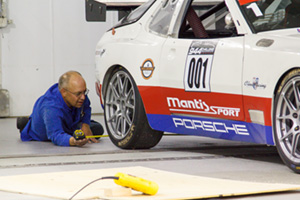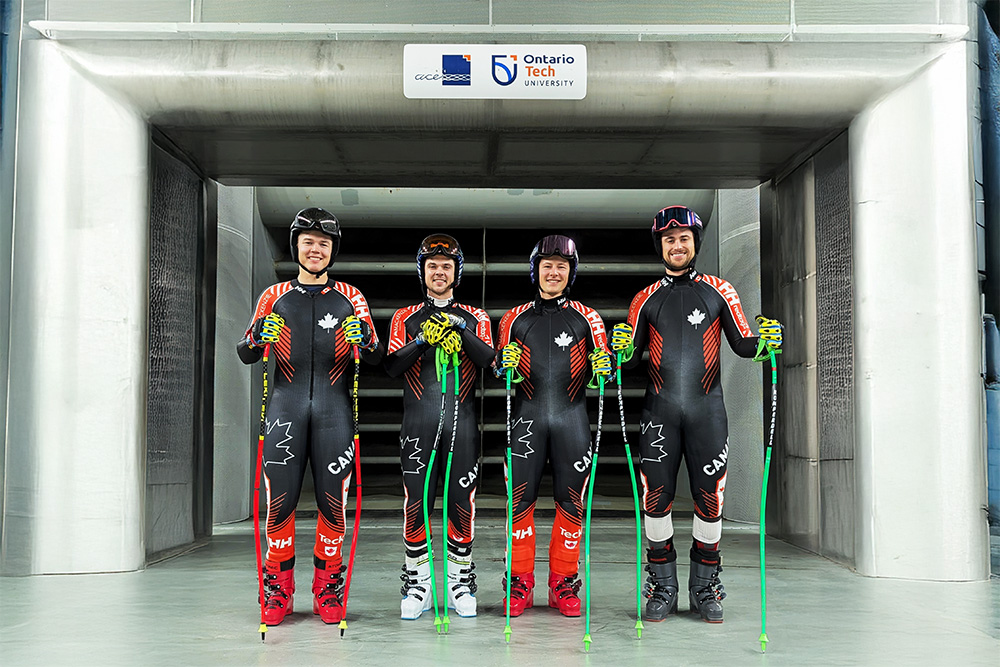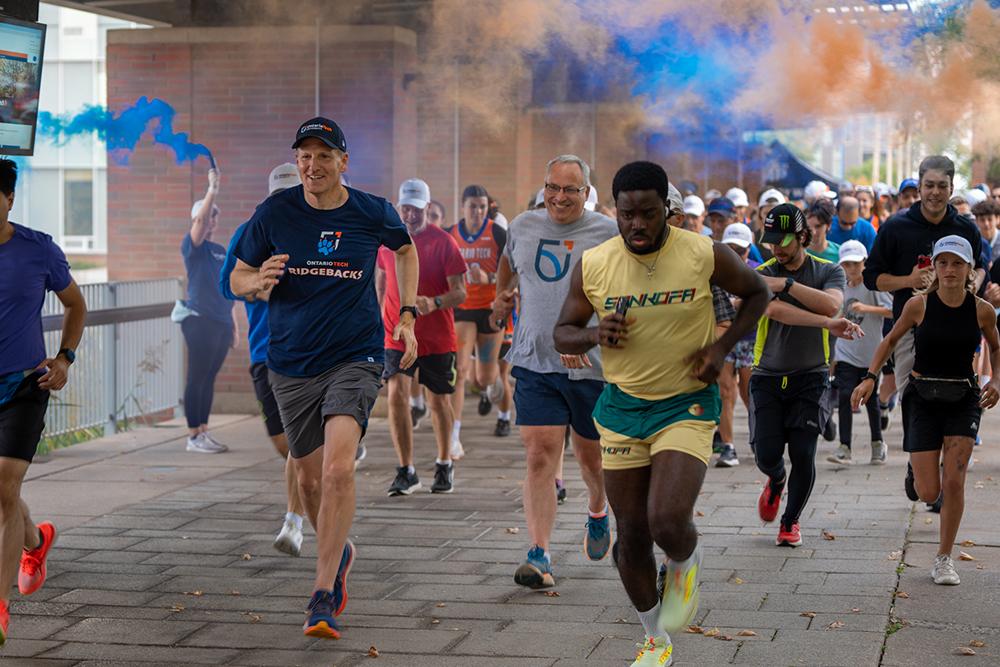Mantis Racing revs up product development at ACE
May 22, 2014

The University of Ontario Institute of Technology's (UOIT) Automotive Centre of Excellence (ACE) opened its doors to race car equipment supplier Mantis Racing on May 16 for the first of two stages of aerodynamic test technique development, designed to help improve the performance of race cars.
In this first stage of testing, weigh scales were placed under the wheels of the car, to measure the downforce – the downwards thrust created by aerodynamic devices on a car like the spoiler. By starting with the car in its baseline condition and then changing something, such as the angle of the spoiler, they were able to measure the difference in the downforce. According to Dr. Gary Elfstrom, Director of Business Development, ACE, and Adjunct Professor, Faculty of Engineering and Applied Science (FEAS), these measurements can be used to help the company determine whether the change improves or degrades the car's performance. In the second stage, under development with ACE, they will use more accurate force balance plates, which will allow for the measurement of drag.
"We're actually going to develop a test technique that will not only help the product development for this car, but will also allow Mantis Racing to offer services as a consultancy," said Dr. Elfstrom. "They will bring in drivers with their cars and we'll be able to help them learn more about their cars and develop their own techniques."
Mantis also plans to take advantage of the unique capabilities of ACE’s Climatic Wind Tunnel, which allows for cars to run, with wheels moving, during testing. In addition to conducting basic aerodynamic testing, researchers take the data and mimic the vehicle driving up and down hills and around a track under the varying loads already measured with wind. It is also the only wind tunnel in the world that has a turntable coupled with a large full scale dynamometer. This allows researchers to operate the vehicle under full load and high-speed running conditions that enable the vehicle to rotate into the wind. This simulates crosswinds and cornering, which is useful for both aerodynamic and thermodynamic research and development.
Dr. Elfstrom says there is an untapped market for this kind of testing in Canada. Up until now, the race car industry has had to conduct these tests in the U.S., but now, UOIT can do both types of tests.
This testing will spawn more business and research and development for UOIT. "By the time we're finished, we're going to have an absolutely unique capability that will demonstrate to the world that they should come to the University of Ontario Institute of Technology for collaborative research,” said Dr. Elfstrom. “After all, we're really here to enable product development, particularly in Ontario, and even beyond."
Mantis Racing's tests were made possible by a Natural Sciences and Engineering Research Council of Canada (NSERC) Engage Grant, which is designed to help link Canadian industry with the knowledge and expertise of Canadian universities.
"The grant really provides a forum to develop a partnership with industry," said John Komar, Director, Engineering and Operations, ACE. "Once we have that relationship, and the benefit of academic and industry collaboration becomes apparent, it helps us get bigger and better partnerships."



